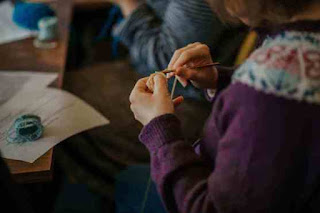Co-Design?
Archived from January 2015
One of the first challenges for this year is a presentation
about user-centred or co-design, what it means to design a process with
participants and what it may be like for participants to be part of that
experience. Not a small topic, then.
A key part for me was to explore what I felt co-design to be
about – and why working with participants in the research process was important
in the work I am planning. So many conversations, blogs and articles offer
different judgements on what co-design ‘means’ – with quite a few claiming
co-design as an approach for something which uses data gathering through a
workshop or survey to thinly veil a pre-determined direction set by the
researcher as expert .
"You keep using that word. I do not think it means what
you think it means.”
Goldman, William (1973)
It turns out that these arguments about co-design are still
pretty ‘zeitgeist-y’… Kevin Gillan blogged a few weeks ago about the needs to
move ‘towards an ethic of public sociology’. He highlights the challenge in
planning research co-design:
“Scholars need to guard against unwittingly reproducing an
extractive mode of engagement with ‘research subjects’ and instead take
seriously the idea of co-production of knowledge that recognises the expertise
of movement groups involved in the analysis of social problems. Given the
inequalities built into research relationships that are often sparked by
academics with agendas that have been set already, and in conversation with
problems defined in scholarly literature, this is a difficult task that should
be embedded in the design of research projects and operate continuously through
data collection, analysis and dissemination”.
The AHRC ‘Connected Communities’ project is reflecting on
the impact collaborative research has had on the projects undertaken in the
last few years. A report from the January advisory group meeting highlighted
the benefits for participants, including “new relationships, increased
credibility, greater recognition for existing work, ownership and control of
research projects”. The winter 2014 special edition of DesignIssues included an
article by Tuuli Mattelmäki, Kirsikka Vaajakallio and Ilpo Koskinen on
developments in co-design and empathic design in the Nordic countries – where
perhaps it has been embedded most significantly.
Co-design has to be more than user-centred, where there is
participation and consultation, but the focus remains with the researcher.
Instead, co-designed research should be about a dialogic process: ‘Co’
indicates something which is about community, equality, empowerment and
collective creativity; something sustainable, shared, active and social.
Co-design is democratising and a political statement about challenging those
“inequalities” of the research relationship.
This is, of course, not without difficulty. Many feel
concerned about the abrogation of responsibility in research design. How can
the researcher manage unexpected provocations, trajectories and outcomes? How
can we behave ethically in gaining informed consent for an organic process from
which unanticipated data may spring? There are other questions about providing
an authentic voice for research outputs co-created with participants outside
the academy. Don’t get me started on the anxieties surrounding academics’
personal competencies such as emotional intelligence and sensitivity.
Co-design is a very messy process – it demands lots of fuzzy
discussion before a clear line of thought and organised, collaborative outcome
can be reached. I am trying to put into practice Kevin Gillan’s points about
embedding ethically considered co-design in my research project. This may mean
lots of unexpected direction - participants may want to consider different
issues to the ones I am anticipating; constant review of what informed consent
means will be necessary; finding the right voice and format for dissemination
cannot be decided yet because my research collaborators need to discuss that at
length. Readjusting and reframing will be demanding, but social, creative,
authentic – and worth it.




Comments
Post a Comment